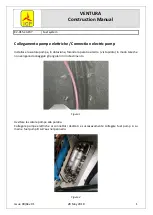
SCHEMPP-HIRTH FLUGZEUGBAU GmbH., KIRCHHEIM/TECK
Arcus M
FLIGHT MANUAL
Optimum flap positions
The camber-changing flaps alter the wing section such that the laminar bucket is
always well suited to the actual flying speed.
Use of flaps for
flaps
at
units
AUW = 625 kg
1378 lbs
AUW = 800 kg
1764 lbs
Low speed
flying (straight
and level)
L
km/h
kts
mph
84
45
52
95
51
59
+2
km/h
kts
mph
84 – 88
45 – 48
52 - 55
95 – 100
51 – 54
59 - 62
+1
km/h
kts
mph
88– 100
48 – 54
55 - 62
100 – 113
54 – 61
62 - 70
Best L/D
0
km/h
kts
mph
100 – 132
54 – 71
62 - 82
113 – 150
61 – 81
70 - 93
Flying between
thermals and
high speed
flying
-1
km/h
kts
mph
132 – 152
71 – 82
82 - 94
150 – 172
81 – 93
93 - 107
-2
km/h
kts
mph
152 – 175
82 – 94
94 - 109
172 – 198
93 – 107
107 - 123
S
km/h
kts
mph
175 – 280
94 – 151
109 - 174
198 – 280
107 – 151
123 - 174
For a speed polar diagram refer to section 5.3.2.
For smooth thermals flap setting and while climbing in slow straight flight "+2" is
recommended; in turbulent thermals, which require a quick aileron response, flap
setting "+1" is advantageous. Near the lower end of the optimum circle in thermal
speeds the pilot may even use flap setting "L", especially at high all-up masses or
in updrafts with hardly any variation in flying speed. Best glide and moderate inter-
thermal speeds are covered by flap setting "0" and "-1" – for high cruise the
optimum performance is achieved with the more negative settings.
October 2011
Revision --
appr. 4.5.3.3











































